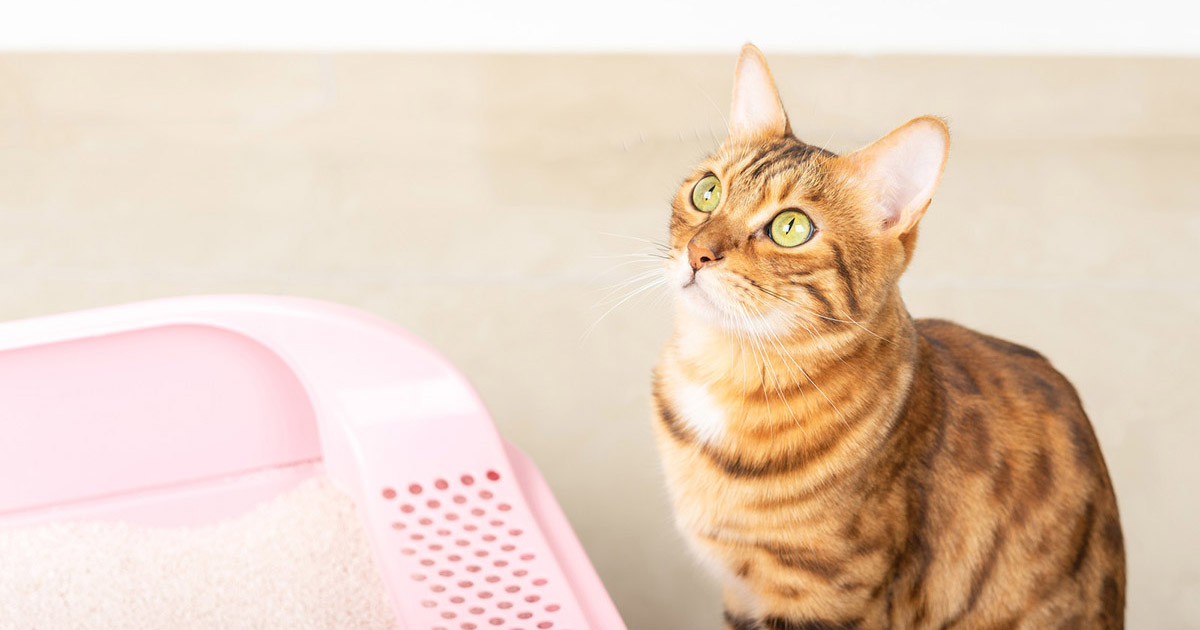We've found this article pertaining to Don't Flush Your Pets Poo Down The Loo, Vet Warns directly below on the net and felt it made perfect sense to share it with you on my blog.

When it comes to getting rid of waste, specifically animal waste, many people usually consider the practical choice of flushing it down the toilet. Nevertheless, this apparently simple service can have serious repercussions for the environment and public health. In this post, we'll explore why flushing pet waste down the toilet is a negative idea and provide alternate techniques for proper disposal.
Intro
Correct waste disposal is essential for maintaining environmental sustainability and public health. While it might seem safe to purge animal waste down the commode, it can result in various problems, both for the setting and human well-being.
Dangers of flushing pet waste
Ecological effect
Purging pet waste introduces harmful bacteria and pathogens into waterways, which can adversely influence marine ecological communities. These virus can infect water resources and damage marine life, disrupting fragile communities.
Public health concerns
Animal waste includes hazardous microorganisms such as E. coli and Salmonella, which can pose significant wellness risks to people. Purging pet waste down the commode can infect water supplies, resulting in the spread of illness and infections.
Alternatives to flushing
Rather than flushing animal waste down the toilet, there are several alternative disposal methods that are much more environmentally friendly and hygienic.
Composting
Composting animal waste is an environmentally friendly way to deal with it. By composting, organic matter is broken down right into nutrient-rich soil, which can be used to feed gardens and plants.
Landfill disposal
Getting rid of animal waste in a garbage dump is an additional alternative. While not as environmentally friendly as composting, it is a more secure option to flushing, as it avoids the contamination of water sources.
Pet dog waste disposal systems
There are customized animal garbage disposal systems available that securely and hygienically throw away animal waste. These systems commonly make use of enzymes to break down waste and get rid of smells.
Actions to proper animal garbage disposal
To ensure correct disposal of animal waste, comply with these actions:
Scooping and landing waste
Frequently scoop and bag pet waste making use of biodegradable bags. This prevents waste from contaminating the environment.
Utilizing designated waste bins
Dispose of bagged animal waste in designated waste containers, such as garden compost containers or garbage dump bins. Avoid flushing it down the bathroom in any way costs.
Cleaning can and family pet areas frequently
Routinely tidy can and animal locations to stop the accumulation of waste and bacteria. Usage pet-safe cleaning items to maintain health.
Benefits of correct disposal methods
Taking on appropriate disposal methods for animal waste supplies several advantages:
Reduced environmental pollution
Appropriate disposal approaches reduce the danger of environmental pollution, shielding waterways and ecosystems from contamination
Reduced danger of water contamination.
By staying clear of flushing animal waste down the toilet, the risk of water contamination is substantially lowered, safeguarding public health.
Improved sanitation and hygiene
Correct disposal approaches promote much better sanitation and health, creating a much safer environment for both humans and animals.
Conclusion
In conclusion, purging animal waste down the toilet is harmful to the setting and public health. By adopting alternate disposal approaches and complying with appropriate waste management techniques, we can lessen the negative effect click here of pet waste and add to a cleaner, much healthier planet.
What To Do With Dog Poo – The Do's And Don'ts Of Disposing Of Faeces
Dog poo bins
Some councils provide dedicated dog waste bins in popular dog-walking areas that can take dog poo that has been bagged but you can legally dispose of dog waste in any public litter bin, as long as it is securely bagged. This also applies to your wheelie bin at home.
Do not flush
Water companies do not recommend flushing dog faeces down the toilet because certain parasites can survive the water processing treatment and are potentially harmful to humans. You should also never consider flushing dog poo that has been bagged down the toilet as the bags will not break down and instead create severe blockages in the sewage system.
In the woods
The Forestry Commission promotes a ‘stick and flick’ method for dealing with waste in the woods. This means finding a stick and using it to flick any poo from off the path so that it is out of the way of other walkers. You could also bury it as long as it is not in an area where there might be livestock.
Livestock
Parasites found in dog poo can be transmitted to livestock if they inadvertently eat infected faeces that has been left on grazing land. This could result in the death of sheep or abortion in cattle so you should always make sure you pick up your dog’s waste in fields where livestock could be present.

Routinely tidy can and animal locations to stop the accumulation of waste and bacteria. Usage pet-safe cleaning items to maintain health.
Benefits of correct disposal methods
Taking on appropriate disposal methods for animal waste supplies several advantages:
Reduced environmental pollution
Appropriate disposal approaches reduce the danger of environmental pollution, shielding waterways and ecosystems from contamination
Reduced danger of water contamination.
By staying clear of flushing animal waste down the toilet, the risk of water contamination is substantially lowered, safeguarding public health.
Improved sanitation and hygiene
Correct disposal approaches promote much better sanitation and health, creating a much safer environment for both humans and animals.
Conclusion
In conclusion, purging animal waste down the toilet is harmful to the setting and public health. By adopting alternate disposal approaches and complying with appropriate waste management techniques, we can lessen the negative effect click here of pet waste and add to a cleaner, much healthier planet.
What To Do With Dog Poo – The Do's And Don'ts Of Disposing Of Faeces
Dog poo bins
Some councils provide dedicated dog waste bins in popular dog-walking areas that can take dog poo that has been bagged but you can legally dispose of dog waste in any public litter bin, as long as it is securely bagged. This also applies to your wheelie bin at home.
Do not flush
Water companies do not recommend flushing dog faeces down the toilet because certain parasites can survive the water processing treatment and are potentially harmful to humans. You should also never consider flushing dog poo that has been bagged down the toilet as the bags will not break down and instead create severe blockages in the sewage system.
In the woods
The Forestry Commission promotes a ‘stick and flick’ method for dealing with waste in the woods. This means finding a stick and using it to flick any poo from off the path so that it is out of the way of other walkers. You could also bury it as long as it is not in an area where there might be livestock.
Livestock
Parasites found in dog poo can be transmitted to livestock if they inadvertently eat infected faeces that has been left on grazing land. This could result in the death of sheep or abortion in cattle so you should always make sure you pick up your dog’s waste in fields where livestock could be present.

Do you appreciate reading up on Don't Flush Your Pets Poo Down The Loo, Vet Warns? Write a remark directly below. We'd be delighted to see your thinking about this blog posting. In hopes that you visit us again later on. Sharing is nice. Helping others is fun. Thanks a bunch for being here. Please stop by our site back soon.
Find Out More